# The Payment Channel Lifecycle
# Lightning Network explained
The Lightning Network is a second layer scaling solution for Bitcoin and similar cryptocurrencies. It promises faster transactions and lower fees, enabled by a network of bidirectional payment channels. This post shows the lifecycle of a Lightning Network payment channel.
It all starts out by “branching off the blockchain into the Lightning Network” by funding a payment channel. A high-level overview looks like this:
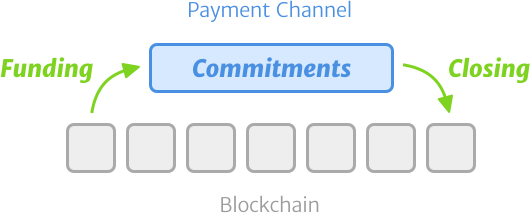
Let’s zoom in …
# The funding transaction
The funding transaction creates a multisignature wallet and signs three transactions but only broadcasts one to the blockchain. The remaining two are the Commitment Transactions each peer holds. After sufficient block confirmations the channel is considered open.
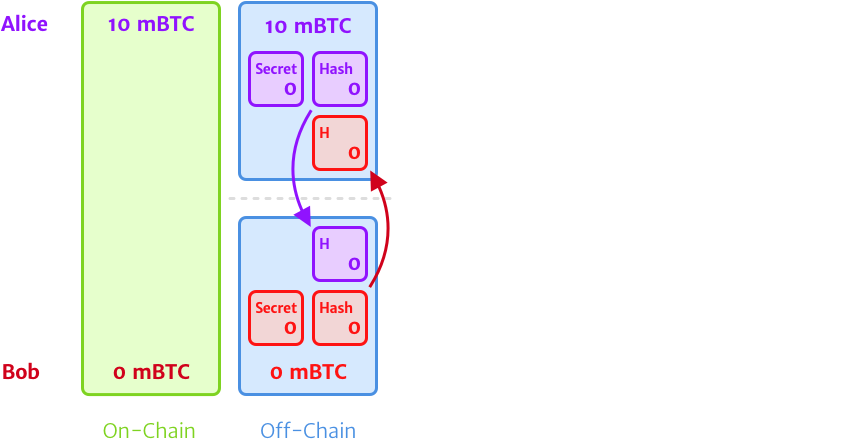
The commitment transactions can be thought of as “balance sheets”, that will be for later use in a channel closing transaction. Each peer holds a secret used to generate a hash for his commitment transaction.
Note: Right now, only a single party can commit funds for opening a new channel. Future versions of the Lightning Network specification will allow for dual-funded payment channels.
# Commitment Transactions
Bob sends Alice an invoice about 4 mBTC, which she pays. This exchanges the current transaction hash and previous secret, also called the revocation key. Each new commitment transaction invalidates old ones as the secret can be used to revoke them.

After the first fund-exchanging commitment transaction, Alice’s state says:
- 4 mBTC for Bob and
- either: 6 mBTC for Alice after 1000 blocks
- or: 6 mBTC for Bob if he knows Alice’s secret
Bob’s commitment transaction is the exact counterpart to Alice’s state:
- 6 mBTC for Alice and
- either: 4 mBTC for Bob after 1000 blocks
- or: 4 mBTC for Alice if she knows Bob’s secret
This is fun – let’s transact once more and see what this seemingly magical 1000 block waiting period (roughly 7 days) is about!

Afterwards Alice’s state says:
- 8 mBTC for Bob and
- either: 2 mBTC for Alice after 1000 blocks
- or: 2 mBTC for Bob if he knows Alice’s secret
The 1000 block wait time becomes important when closing a payment channel …
# Closing a payment channel
There are multiple possibilities of how a payment channel in the Lightning Network can be closed. Let’s start with the simplest and usual way …
# Mutual channel close
This is the best case scenario: A cooperative close initiated by both peers broadcasting their current commitment transactions happens immediately. The multisignature wallet spends the funds back on-chain and both peers should be happy.
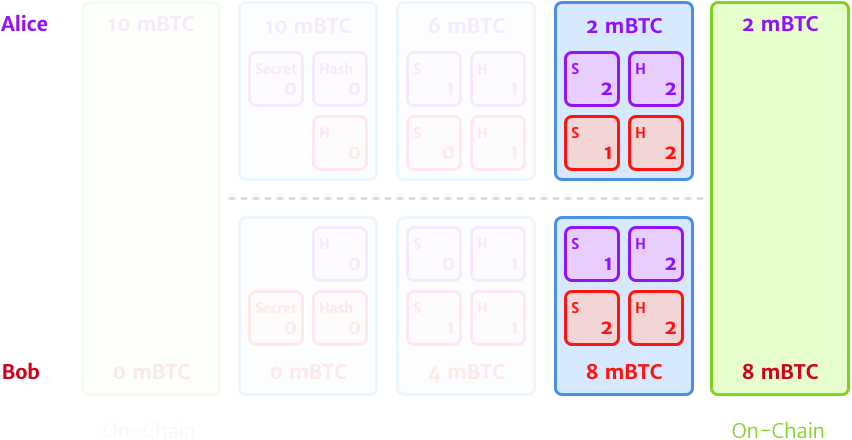
# Force closing a channel
Let’s say Alice disappears and Bob has to unilaterally close to get his funds on-chain. In this case he has to undergo the 1000 block wait time (~7 days), which gives Alice the chance to come back and maybe revoke to this.
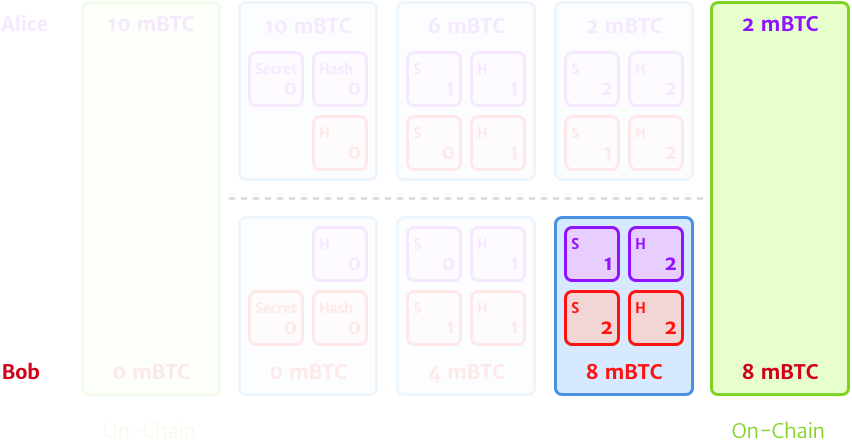
Speaking of …
# What happens in case of a false close?
Let’s say Alice broadcasts an outdated state that favors her. This might be intended (pretty mean, that’s what we call fraud) or accidentally (having an incorrect channel state, restored from backup).

The 1000 block wait time gives Bob the chance to remedy the breach: He knows and reveals the secret/revocation key for Alice’s outdated transaction. Alice will suffer a harsh punishment as discovering the fraud attempt results in a complete seizure of funds. 10 mBTC go to Bob!
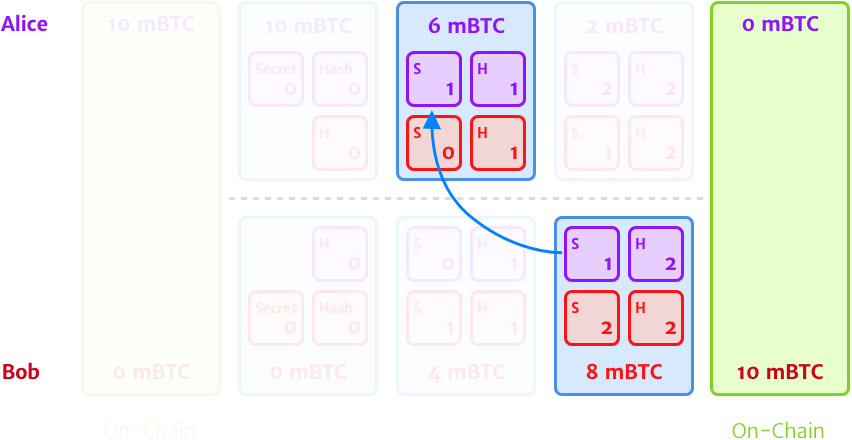
Alright, that’s the shortest version of an explanation I can think of. Hope I explained this well enough and the diagrams make it approachable even for not too technical people. On the other side I also hope it doesn’t oversimplify too much of the concepts.